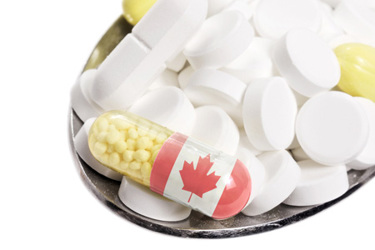Generic Drug Approvals In Canada: Use Of A Foreign-Sourced Reference Product As A Canadian Reference Product
By Prasad Gudepu, Freyr Solutions

Canadian reference products (CRP) play a crucial role in the generic drug approval process in Canada. They serve as the benchmark against which generic formulations are compared to demonstrate pharmaceutical equivalence and bioequivalence. The use of CRP ensures that generic drug products approved for the Canadian market are safe, effective, and therapeutically equivalent to their brand-name counterparts.1
The rationale behind using CRP is rooted in the principle that if a generic product can demonstrate equivalence to a reference product already approved and marketed in Canada, it can be reasonably assumed to have a similar safety and efficacy profile. This approach allows for a more streamlined approval process for generic drugs, avoiding the need for extensive clinical trials while still maintaining high standards of quality and efficacy.
In this article, I’ll share a summary of Health Canada’s current 2017 guidance document (which had replaced previous guidance that had been in place since 1995). It provides sponsors of an Abbreviated New Drug Submission (ANDS) or Abbreviated Extraordinary Use New Drug Submission (AEUNDS) with guidance on how to demonstrate that a foreign-sourced reference drug is acceptable to the Minister of Health as a Canadian reference product.1
Criteria For Acceptable Foreign-Sourced Reference Products
To be considered acceptable as a CRP, a foreign-sourced reference product must meet several key criteria:
- Regulatory authorization: The product must be authorized for marketing by a regulatory authority in a country or region with drug assessment criteria comparable to Canada (e.g., United States (FDA), European Union (EMA), Japan, Switzerland, Australia). 1,2
- Manufacturer identity: Evidence must be provided that the foreign-sourced reference product is marketed in its country of origin by the same innovator company or corporate entity that markets the identical product in Canada.1,2
- Product characteristics: The foreign-sourced product should be identical to the Canadian innovator product in terms of medicinal ingredient(s), dosage form, and strength.2
Documentation And Testing Requirements
Health Canada requires extensive documentation and testing to ensure the equivalence of foreign-sourced reference products to their Canadian counterparts:
- Product information: Detailed information on both the Canadian innovator product and the foreign-sourced reference product must be provided, including product labeling, certificates of analysis, and proof of purchase.1,2
- Comparative in vitro testing: Batches of both products must undergo comparative in-vitro testing using validated analytical procedures.2
- Dissolution profile studies: For solid oral dosage forms, multi-point comparative dissolution profiles in various pH media are required to demonstrate similarity between the products.2
Impact On ANDS Process
The acceptance of foreign-sourced reference products has significant implications for the ANDS process in Canada. This regulatory change streamlines the path to market for many generic drugs, potentially reducing development timelines and costs.
Under the new guidance, generic manufacturers can now use foreign-sourced reference products for comparative bioequivalence studies, provided they meet the specified criteria. This flexibility allows companies to leverage global development programs and data packages, potentially accelerating the ANDS process.3
However, it's important to note that the use of a foreign-sourced reference product does not exempt manufacturers from meeting all other requirements of the ANDS process. Rigorous quality control, manufacturing standards, and post-market surveillance remain critical components of the regulatory framework.
Specific Requirements For Different Dosage Forms
The guidance document outlines specific criteria for different dosage forms:
Solid Oral Immediate-Release Dosage Forms
For solid oral immediate-release dosage forms (including orally disintegrating dosage forms), the following criteria must be met:
- The medicinal ingredient(s) should have "high solubility"
- The foreign-sourced reference product is to be the same as the innovator product marketed in Canada in terms of color, shape, size, weight, type of coating, and scoring configuration.
- The inactive ingredients are qualitatively the same, and quantitative information is available; it should also show them to be the same.
- Multi-point, comparative dissolution profiles should be provided in at least three media covering the physiological pH range (pH 1.2 - 6.8)[2].
- The dissolution phase should be continued until either 90% of the drug substance from the drug product is dissolved or an asymptote is reached.
Immediate-Release Oral Suspensions
For immediate-release oral suspensions, the requirements include:
- The medicinal ingredient(s) should be considered "highly soluble."
- Formulation of foreign-sourced references and marketed Canadian Innovator products should be the same.
- Multi-point, comparative dissolution profiles should be provided in at least three media covering the physiological pH range (pH 1.2 - 6.8).
- The dissolution phase should be continued until either 90% of the drug substance from the drug product is dissolved or an asymptote is reached.
Immediate-Release Orally Inhaled Suspensions And Solutions, Immediate-Release Nasal Suspension
- The foreign‐sourced reference product is the same as the innovator product marketed in Canada as determined by a comparison of the relevant pharmaceutical characteristics for (i) formulation, (ii) physicochemical properties, and (iii) device attributes.
- The formulation's non-medicinal ingredients should be the same as those in the Innovator product marketed in Canada, qualitatively and quantitatively.
- Quantitatively, the same would be interpreted as the amount or concentration of each excipient in the innovator product marketed in Canada to be within ±5% of the amount (or concentration) of each excipient in the foreign-sourced reference product.
- Comparing the physicochemical properties of two products should be essentially the same, and the results of the two reference products are within ±10%. Differences beyond this criterion should be scientifically justified.
Restrictions On High-Risk Medicinal Ingredients
To mitigate potential risks, Health Canada has placed restrictions on the use of foreign-sourced reference products containing high-risk medicinal ingredients:
- The medicinal ingredient should not be a "critical dose drug" as defined in Health Canada's guidance documents.
- The drug should not require patient monitoring to avoid under- or over-treatment.2
These restrictions ensure that the use of foreign-sourced reference products is limited to lower-risk medications where minor formulation differences are less likely to have significant therapeutic impacts.
Implications For Generic Drug Manufacturers
The acceptance of foreign-sourced reference products presents both opportunities and challenges for generic drug manufacturers operating in the Canadian market.
Potential Benefits
- Expanded development opportunities for ANDS manufacturers
- Cost reduction to manufacturers by eliminating the need for separate bioequivalence (BE) studies using CRP
- Accelerated time-to-market could be achieved through these alternatives
- Harmonization with global markets can be achieved by working simultaneously for multiple regions
Potential Risks
- Regulatory complexity: Introduction of additional documentation and testing requirements for manufacturers
- Product differences: Possible impact to BE assessments
- Increased scrutiny: Using CRP may invite additional regulatory scrutiny during the early stages of product development
- Health Authority-dependent process: The applicant must seek permission from Health Canada for CRP selection before initiating drug product development
Strategies For Generic Drug Manufacturers
To effectively leverage the opportunity presented by the acceptance of foreign-sourced reference products, generic drug manufacturers should consider the following strategies:
- Global product development: Align Canadian development programs with global initiatives to maximize efficiency and leverage data across multiple markets.
- Early regulatory engagement: Consult with Health Canada early in development to ensure alignment on the acceptability of proposed foreign-sourced reference products.
- Robust comparative studies: Invest in comprehensive comparative studies between foreign-sourced and Canadian reference products to build a strong case for pharmaceutical equivalence.
- Capitalize on the ease to enter the global market: Develop a generic product based on a reference product from a foreign source with the same medicinal ingredient and identical dosage form.
Conclusion
The acceptance of foreign-sourced reference products as CRP represents a significant step forward in modernizing the generic drug approval process that has increased access to affordable medications in Canada. The 2017 guidance document strikes a balance between regulatory flexibility and maintaining rigorous standards for drug safety and efficacy.
As the pharmaceutical landscape continues to evolve globally, ongoing dialogue between regulators, industry stakeholders, and healthcare professionals will be crucial to refine and optimize the use of foreign-sourced reference products. This balanced approach to regulatory modernization maintains Canada's high standards for drug safety and efficacy while fostering innovation and efficiency in generic drug development.
References
- https://capra.ca/en/blog/new-guidance-document-use-of-a-foreign-sourced-reference-product-as-a-canadian-reference-product-2017-12-04.htm
- https://www.canada.ca/content/dam/hc-sc/documents/services/drug-health-product-review-approval/drug-products/guidance-documents/canadian-reference-product-guidance-eng.pdf
- https://clinchoice.com/regulatory-submission-of-generic-drugs-in-canada-best-practices/
About The Author:
 Prasad Gudepu is assistant general manager in regulatory affairs for medicinal products at Freyr Solutions. He has 15+ years of extensive experience in providing regulatory submission strategies, classifying products (Rx/OTC), developing regulatory road maps, assessing technical source documents, and preparing Modules 1, 2.3, and 3 for 505(b)(2), ANDAs, ANDSs, supplements, amendments, and annual reports to sponsors of generics and OTC products for their registration and maintenance with U.S. FDA and Health Canada.
Prasad Gudepu is assistant general manager in regulatory affairs for medicinal products at Freyr Solutions. He has 15+ years of extensive experience in providing regulatory submission strategies, classifying products (Rx/OTC), developing regulatory road maps, assessing technical source documents, and preparing Modules 1, 2.3, and 3 for 505(b)(2), ANDAs, ANDSs, supplements, amendments, and annual reports to sponsors of generics and OTC products for their registration and maintenance with U.S. FDA and Health Canada.
